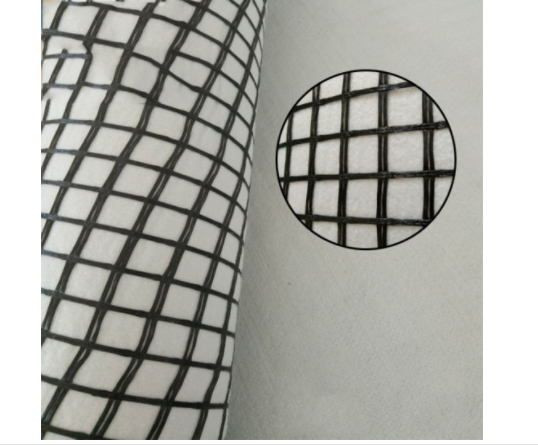- Understanding the Role of Geomembrane Liners in Waste Management
- Innovations in Geomembrane Liners for Water Management
- Geomembrane Liners: A Comprehensive Guide
- The Future of Geomembrane Liners in Civil Engineering
- Geomembrane Liners: Enhancing Landfill Stability
Manager:
WhatsApp:+86 177 0135 2670
Tel:+86 177 0135 2670
Email:marketing@okorder.com
Address:3rd Floor, No.2 Building, No.1 Sanlihe Road
The Role of Geotextile Grids in Modern Engineering: The Unseen Heroes
There is a silent unsung hero in the field of modern engineering. This material quietly supports the infrastructure we rely on each day. In our lives, various kinds of geosynthetics, such as geotextile grids are considered as the center point for so many applications; from road construction to environmental protection. As I explore the world of geotextile grids, I am struck by how versatile these materials are and how much they can affect the way we shape and save our environment.
An Introduction to Geotextile Grids: The Unsung Heroes
Geotextile grids are one type of artificial materials that have been designed to work together with soil and other building substances. These are meant to improve stability and structural integrity while providing reinforcement and filtration benefits. As I explore the uses and market dynamics associated with them, it reminds me about what these fabrics could do differently for construction and environmental stewardship.

A Historical Perspective
Some notable projects such as Delta Works in Netherlands or Valcros Dam at France were breakthrough projects that first brought this concept into reality during 1960s. With time, geotextile grids have become a basic necessity in all civil engineering projects worldwide.
Types and Functions
Each type of geotextile grid has its own attributes and areas where it can be used. For example, woven Geotextiles which have high strength offer reinforcement and separation services; non-woven whose permeability is excellent perform filtration or drainage functions best. In making roads last longer with little maintenance, it requires six vital roles played by the geotex tiles such as waterproofing filtering reinforcing separating draining protecting stability.
Geotextile Grids in Road Infrastructure
Integrating geotextiles into road constructions greatly improves their durability because they prevent erosion of soil through better water drainage systems and load distribution.
Reinforcement and Reflective Crack Control
For example, if geogrids are placed between the base course and subgrade in pavements, they offer stiffening and reinforcing effects restrict cracks. This is especially useful in low-volume flexible pavements where they can be used to accommodate settlements better than traditional materials in construction.
Drainage and Filtration
Geotextile grids are involved not only in reinforcement but also in drainage and filtration processes within road structure. While allowing water through, it retains soil particles which would otherwise get washed away thus maintaining road stability preventing its erosion.
Geotextile Grids in Environmental and Geotechnical Engineering
Beside road building, geotextile grids have been employed in environmental and geotechnical engineering. These are used as anti-seepage measures for landfills, reservoirs, canals as well as dams that block surface water infiltration while protecting these structures against groundwater contamination.
Erosion Control
Especially on steep slopes the importance of geotextile grids cannot be overemphasized when it comes to the implementation of erosion control measures. This work by allowing water to flow through them while resisting fine soil particles from being carried down slope which stabilize the slope as well support vegetative cover growth.
Paving and Construction Maintenance
Road maintenance costs can be reduced greatly if pavement designs include the use of geosynthetic material act as stress-relieving interlayers since they reduce the reflection rate of cracks. By doing so, one can enhance lifespan of a pavement besides improving its serviceability.
The Competitive Landscape: Innovators and Leaders
Key players drive the industry with their innovations thereby making geosynthetics market a vibrant ecosystem.
The market continues to be driven by key players.
You see, Propex Global and TenCate Geosynthetics are not just selling products, they are selling solutions. This focus on technological innovation and sustainability is shaping the future of geotextile grids.
This Future Lies in Innovation and Sustainability of Geotextile Grids
The industry is increasingly developing eco-friendly and sustainable geotextiles. The trend towards more sustainable production of these fabrics is evident in the use of jute and coir as raw materials.
Feelings from Inside: an Emotional Link
In conclusion, having explored geotextile grids, I am left with a great regard for innovation and the possibilities that these textiles carry within themselves. They are not merely materials; they form our infrastructure’s bedrock as well as shield the environment. Market growth projections for this product aren’t just based on financial data but also on its potential to make tomorrow better through it.
- Previous:Geotextile Road Fabric: The Versatile Role That Is Fundamental to Infrastructure Resilience
- Next:The Mirafi® Geotextile Chronicles: A Strong and Innovative Tapestry






